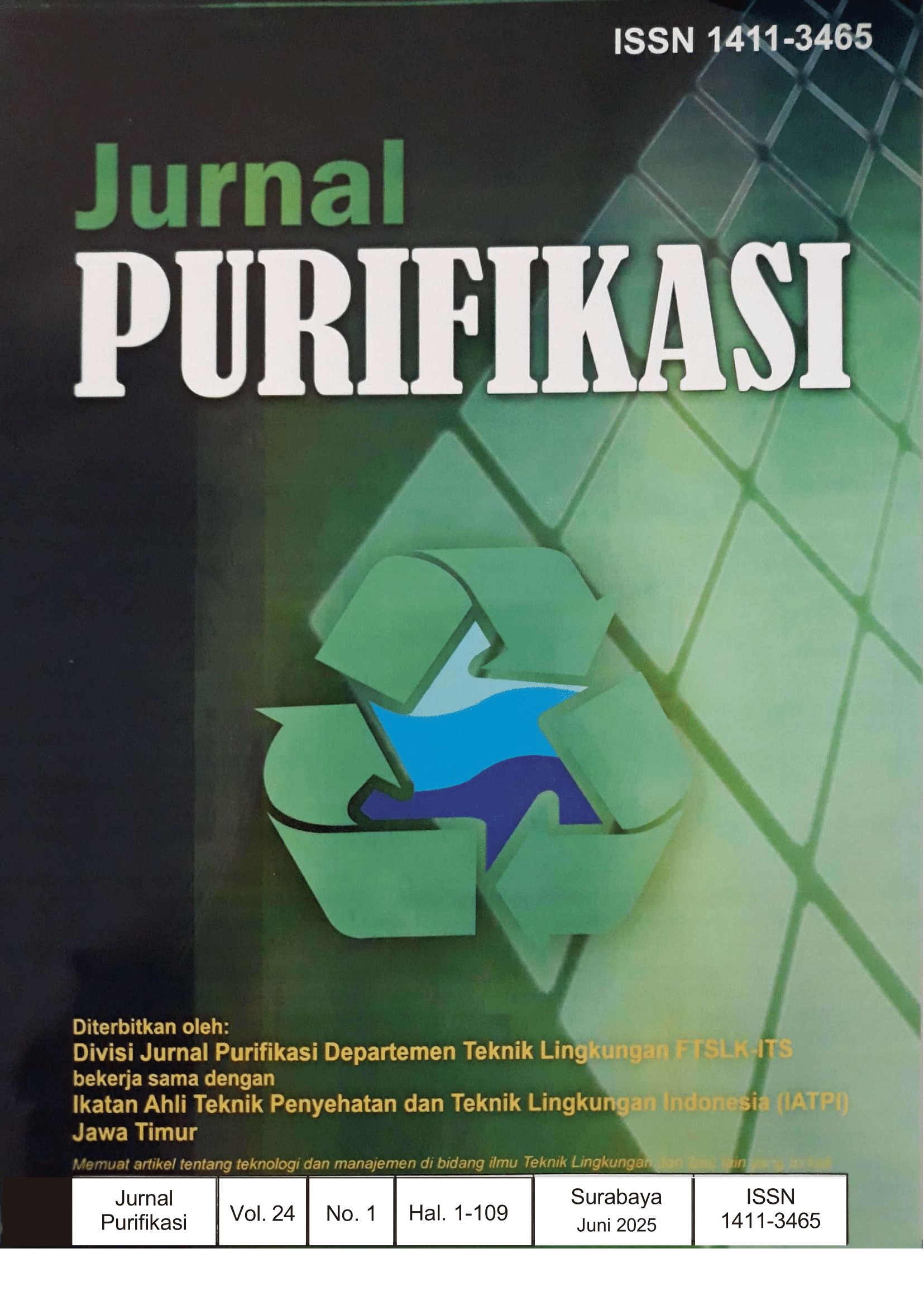PLASTIC PARTICLE CONTAMINATION IN SUBSTRATE AND FRASS OF BLACK SOLDIER FLY LARVAE CULTIVATION IN COMMUNITY SOLID WASTE RECYCLING CENTERS
Main Article Content
Abstract
Bioconversion of solid waste (SW) by black soldier fly (BSF) is a promising sustainable SW treatment approach. However, insufficient segregation may lead to plastic contamination in BSF larvae (BSFL) substrates, compromising the quality of BSFL-derived products and potentially introducing plastic particles into the food chain. This study aimed to investigate plastic abundance in SW from different sources and determine abundance of plastic particles in BSFL substrates and frass. The research was conducted at the Jambangan Recycling Center (JRC) and the Wonorejo Composting Center (WCC) in Surabaya, Indonesia. The results showed that 74% of SW at JRC was suitable for BSFL substrate, while only 36.62% of SW can be used in WCC. The amount of plastic abundance in the BSFL substrate in JRC and WCC were 2.28% and 7.63%, respectively. At JRC, 12 macroplastic (MaP), 9 mesoplastic (MeP), and 334 microplastic (MP) particles were detected per kilogram dry-weight (DW) of BSFL substrate, whereas 250 MP particles were found in frass. The insufficient SW segregation at the WCC has led to an abundance of plastic particles per kilogram DW of BSFL substrate (i.e., 40 MaP, 35 MeP, and 734 MP particles) and frass (484 MP particles). Plastic transparent films were mostly found in both substrates and frass. The size of MaPs typically ranged from 2.5 to 10 cm, while MPs predominantly fell within the 1 µm to 1 mm range. These findings highlight the importance of source segregation to reduce plastic contamination and enhance the efficiency and safety of BSF bioconversion process.
Downloads
Article Details
Submission of a manuscript to Jurnal Purifikasi means that the work has never been published in another journal and is not under consideration for publication elsewhere. The author hereby agrees to submit the copyright of the manuscript and its contents to Jurnal Purifikasi, if accepted for publication. Accepted manuscripts will be published in printed form where the ISSN is bound in printed form, not in online form (pdf). Authors are not allowed to publish their work in other forms (journals) without permission from the Jurnal Purifikasi manager.
By submitting a manuscript, the author is deemed to know all the rights and obligations attached to each manuscript.


 https://orcid.org/0009-0004-4054-5811
https://orcid.org/0009-0004-4054-5811






